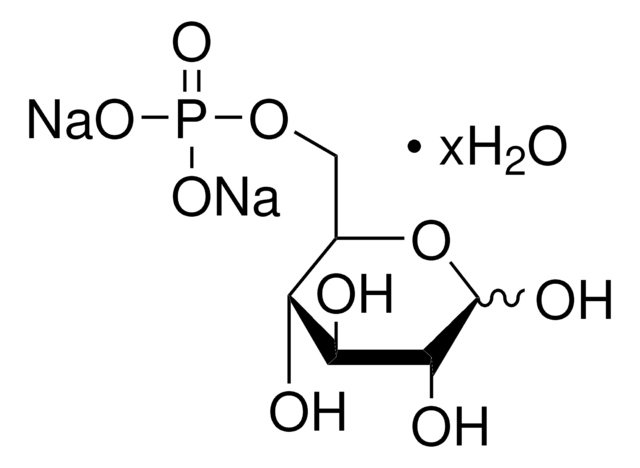MAK014
Glucose-6-Phosphate Assay Kit
sufficient for 100 colorimetric tests
About This Item
Empfohlene Produkte
Verwendung
sufficient for 100 colorimetric tests
Nachweisverfahren
colorimetric
Relevante Krankheit(en)
hematological disorder
Lagertemp.
−20°C
Allgemeine Beschreibung
Anwendung
- glucose 6-phosphate (G6P) assay
- quantification of glucose-6-phosphate (G6P) and fructose-6-phosphate (F6P)
- metabolite analysis
Eignung
Prinzip
Ersetzt durch
Signalwort
Danger
H-Sätze
Gefahreneinstufungen
Eye Dam. 1 - Resp. Sens. 1 - Skin Corr. 1B
Lagerklassenschlüssel
8A - Combustible corrosive hazardous materials
Hier finden Sie alle aktuellen Versionen:
Analysenzertifikate (COA)
Die passende Version wird nicht angezeigt?
Wenn Sie eine bestimmte Version benötigen, können Sie anhand der Lot- oder Chargennummer nach einem spezifischen Zertifikat suchen.
Besitzen Sie dieses Produkt bereits?
In der Dokumentenbibliothek finden Sie die Dokumentation zu den Produkten, die Sie kürzlich erworben haben.
Artikel
We presents an article about the Warburg effect, and how it is the enhanced conversion of glucose to lactate observed in tumor cells, even in the presence of normal levels of oxygen. Otto Heinrich Warburg demonstrated in 1924 that cancer cells show an increased dependence on glycolysis to meet their energy needs, regardless of whether they were well-oxygenated or not.
Protokolle
Enzymatic Method for Determining Glucose-6-Phosphate (Glucose-6-Phosphate Assay)
Unser Team von Wissenschaftlern verfügt über Erfahrung in allen Forschungsbereichen einschließlich Life Science, Materialwissenschaften, chemischer Synthese, Chromatographie, Analytik und vielen mehr..
Setzen Sie sich mit dem technischen Dienst in Verbindung.




